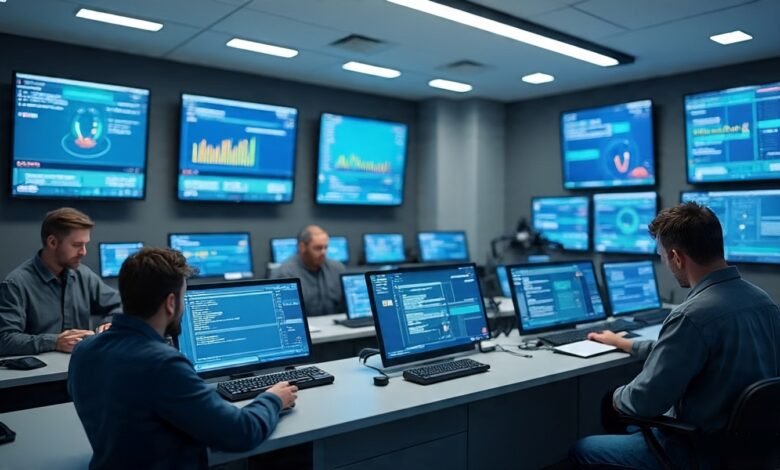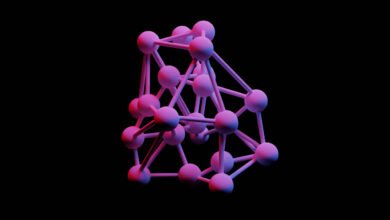How IoT is Transforming the Facility Management Industry
Discover how IoT technology is revolutionizing facility management with smart sensors, predictive maintenance, and automated systems for enhanced efficiency.

The facility management industry is experiencing an unprecedented digital transformation, with Internet of Things (IoT) technology emerging as the most influential force reshaping traditional operational practices. As organizations worldwide seek to optimize their physical spaces, reduce operational costs, and enhance occupant experiences, IoT in facility management has become the cornerstone of modern building operations.
IoT technology encompasses a network of interconnected devices, sensors, and systems that collect, analyze, and act upon real-time data to create intelligent building environments. This revolutionary approach to facility management enables property managers, building operators, and facility teams to make data-driven decisions that were previously impossible with conventional management methods.
The integration of smart building technologies through IoT has fundamentally altered how facilities are monitored, maintained, and managed. From predictive maintenance systems that prevent equipment failures before they occur to energy management solutions that automatically adjust HVAC systems based on occupancy patterns, IoT is transforming every aspect of facility operations. This technological evolution represents more than just an upgrade to existing systems—it’s a complete paradigm shift toward proactive, intelligent, and sustainable facility management practices.
Today’s facility managers are no longer reactive maintenance coordinators but strategic technology integrators who leverage IoT sensors, analytics platforms, and automated systems to create optimal environments for occupants while maximizing operational efficiency. The impact of this transformation extends beyond individual buildings, influencing entire portfolios of properties and setting new industry standards for performance, sustainability, and occupant satisfaction.
Understanding IoT in Facility Management
IoT in facility management refers to the strategic implementation of connected devices, sensors, and systems that work collaboratively to monitor, control, and optimize building operations. This comprehensive network creates a digital ecosystem where physical assets communicate with management platforms, enabling unprecedented visibility into facility performance and operational efficiency.
The foundation of IoT facility management lies in its ability to transform traditional reactive maintenance approaches into proactive, data-driven strategies. By deploying smart sensors throughout buildings, facility managers gain real-time insights into equipment performance, environmental conditions, energy consumption patterns, and space utilization metrics. This continuous stream of data enables informed decision-making and strategic planning that was previously impossible with manual monitoring methods.
Smart building technologies powered by IoT create interconnected environments where HVAC systems, lighting controls, security systems, and maintenance equipment communicate seamlessly. This integration allows for automated responses to changing conditions, such as adjusting temperature settings based on occupancy levels or triggering maintenance alerts when equipment performance deviates from optimal parameters.
The scope of IoT applications in facility management extends across multiple operational areas, including energy management, space optimization, security monitoring, and predictive maintenance. Each application leverages specific types of sensors and devices designed to capture relevant data points that contribute to overall facility intelligence and operational excellence.
Key IoT Technologies Revolutionizing Facilities
Smart Sensors and Monitoring Systems
Smart sensors represent the fundamental building blocks of IoT-enabled facility management systems. These sophisticated devices continuously monitor various environmental and operational parameters, including temperature, humidity, air quality, occupancy levels, and equipment performance metrics. IoT sensors are strategically deployed throughout facilities to create comprehensive monitoring networks that provide facility managers with real-time visibility into building conditions.
Modern sensor technology has evolved to include wireless capabilities, extended battery life, and advanced analytics functions that enable edge computing and immediate response to critical conditions. These improvements have made large-scale sensor deployments more feasible and cost-effective for facility management applications.
Environmental monitoring systems powered by IoT technology enable facility managers to maintain optimal indoor conditions while minimizing energy consumption. Air quality sensors detect pollutants and automatically trigger ventilation adjustments, while occupancy sensors ensure that lighting and HVAC systems operate only when spaces are in use.
Connected Building Infrastructure
Connected building infrastructure forms the backbone of modern smart facility management systems. This infrastructure includes networked HVAC systems, intelligent lighting controls, automated access systems, and integrated security platforms that work together to create responsive building environments.
Building automation systems enhanced with IoT capabilities can automatically adjust operational parameters based on real-time data inputs from multiple sensors and external factors such as weather conditions, utility rates, and occupancy schedules. This level of automation reduces manual intervention requirements while ensuring optimal building performance.
The integration of various building systems through IoT networks enables centralized control and monitoring through unified management platforms. Facility managers can access comprehensive dashboards that provide insights into all connected systems, allowing for coordinated responses to operational challenges and opportunities.
Benefits of IoT Implementation in Facility Management
Enhanced Operational Efficiency
IoT technology dramatically improves operational efficiency by automating routine tasks, optimizing resource allocation, and enabling data-driven decision-making processes. Facility management teams can focus their efforts on strategic initiatives rather than reactive maintenance activities, leading to improved overall productivity and service delivery.
Smart building technologies eliminate many manual monitoring and adjustment tasks through automated systems that respond to real-time conditions. This automation reduces labor costs while ensuring consistent performance standards across all facility operations.
The data analytics capabilities inherent in IoT systems provide facility managers with insights into operational patterns and performance trends that enable continuous improvement initiatives. These insights support evidence-based optimization strategies that deliver measurable efficiency gains.
Predictive Maintenance and Asset Management
Predictive maintenance represents one of the most significant advantages of IoT in facility management. By continuously monitoring equipment performance through IoT sensors, facility managers can identify potential failures before they occur, scheduling maintenance activities during optimal windows to minimize disruption and extend asset lifecycles.
Asset management becomes significantly more sophisticated with IoT integration, as managers gain complete visibility into asset utilization, performance history, and maintenance requirements. This comprehensive understanding enables strategic decisions about asset replacement, upgrades, and optimization that maximize return on investment.
Maintenance optimization through IoT technology reduces unplanned downtime, extends equipment lifecycles, and improves overall facility reliability. The transition from reactive to predictive maintenance strategies typically results in substantial cost savings and improved occupant satisfaction.
Energy Management and Sustainability
Energy management capabilities are significantly enhanced through IoT implementation in facility management. Smart energy systems automatically optimize consumption patterns based on occupancy, weather conditions, and utility rate structures, delivering substantial cost savings while supporting sustainability objectives.
IoT technology enables granular monitoring of energy consumption across all building systems, providing facility managers with detailed insights into usage patterns and optimization opportunities. This visibility supports targeted efficiency improvements and energy conservation initiatives.
Sustainable facility management practices are facilitated by IoT systems that optimize resource utilization, reduce waste, and support environmental compliance requirements. These capabilities align with corporate sustainability goals while delivering operational cost benefits.
IoT Applications in Different Facility Management Areas
HVAC Systems and Climate Control
HVAC optimization through IoT technology represents a major advancement in building climate control and energy efficiency. Smart HVAC systems equipped with IoT sensors and controls can automatically adjust temperature, humidity, and air quality parameters based on real-time occupancy data and environmental conditions.
Climate control systems enhanced with IoT capabilities provide zone-level management that ensures optimal comfort in occupied areas while minimizing energy consumption in unoccupied spaces. This precision control significantly reduces energy waste while maintaining superior indoor environmental quality.
The integration of IoT sensors with HVAC systems enables predictive maintenance capabilities that prevent system failures and optimize performance throughout equipment lifecycles. These systems can automatically schedule maintenance activities and order replacement parts before failures occur.
Security and Access Control
IoT security systems provide comprehensive monitoring and access control capabilities that enhance facility safety while streamlining operations. Smart access control systems utilize IoT technology to manage entry permissions, monitor facility access patterns, and integrate with other building systems for coordinated security responses.
Connected security devices including cameras, motion sensors, and access readers work together to create comprehensive security networks that provide real-time monitoring and automated threat response capabilities. These systems can automatically alert security personnel and facility managers to potential security incidents.
The integration of security systems with other IoT applications enables coordinated responses to emergency situations, such as automatically unlocking emergency exits during fire alarms or adjusting lighting and HVAC systems during security incidents.
Space Utilization and Occupancy Management
Space utilization monitoring through IoT technology provides facility managers with detailed insights into how building spaces are actually used versus designed capacity. Occupancy sensors track real-time usage patterns that support data-driven decisions about space allocation, layout optimization, and future expansion needs.
Smart space management systems can automatically adjust environmental conditions, lighting, and other amenities based on actual occupancy patterns rather than predetermined schedules. This responsive approach improves occupant comfort while optimizing energy consumption.
The data collected through IoT space monitoring systems supports strategic facility planning initiatives, including space consolidation opportunities, layout optimization projects, and informed decisions about lease renewals or expansions.
Challenges and Considerations
Data Security and Privacy
Data security represents a critical consideration in IoT facility management implementations. The extensive network of connected devices creates multiple potential entry points for cybersecurity threats, requiring comprehensive security strategies that protect both facility operations and occupant privacy.
Privacy concerns arise from the continuous monitoring capabilities of IoT systems, particularly occupancy tracking and behavioral pattern analysis. Facility managers must implement appropriate data governance policies and ensure compliance with relevant privacy regulations.
Cybersecurity measures for IoT systems require ongoing attention and regular updates to address emerging threats and vulnerabilities. This includes secure device configuration, network segmentation, and regular security assessments of all connected systems.
Integration and Compatibility Issues
System integration challenges often arise when implementing IoT technology in existing facilities with legacy building systems. Ensuring compatibility between new IoT devices and existing infrastructure requires careful planning and potentially significant investment in system upgrades.
Interoperability between different IoT devices and platforms can be complex, particularly when systems from multiple vendors are involved. Standardization efforts and open protocols help address these challenges, but integration planning remains critical for successful implementations.
Legacy system compatibility issues may require phased implementation approaches or significant infrastructure upgrades to achieve full IoT integration benefits. These considerations must be factored into project planning and budgeting processes.
Future Trends and Innovations
Artificial Intelligence and Machine Learning Integration
AI in facility management is poised to significantly enhance IoT capabilities by adding sophisticated analytics and automated decision-making capabilities to building systems. Machine learning algorithms can analyze historical data patterns to optimize facility operations and predict future needs with increasing accuracy.
Intelligent building systems will leverage AI to make autonomous decisions about energy management, maintenance scheduling, and space allocation based on complex data analysis that exceeds human analytical capabilities. This evolution represents the next generation of smart facility management.
The integration of AI and IoT technologies will enable self-optimizing buildings that continuously improve their performance based on operational experience and changing conditions. These systems will require minimal human intervention while delivering superior results.
Edge Computing and Real-Time Processing
Edge computing capabilities in IoT systems enable real-time data processing and decision-making at the device level, reducing latency and improving system responsiveness. This advancement is particularly important for critical building systems that require immediate responses to changing conditions.
Real-time analytics powered by edge computing enable instant optimization adjustments and immediate alert generation for critical situations. This capability significantly improves building safety and operational efficiency.
The deployment of edge computing in facility management reduces bandwidth requirements and improves system reliability by enabling local processing capabilities that function independently of cloud connectivity.
Implementation Best Practices
Strategic Planning and Assessment
Successful IoT implementation in facility management requires comprehensive strategic planning that aligns technology investments with organizational objectives and operational requirements. Facility assessment processes should identify specific areas where IoT technology can deliver the greatest value and return on investment.
Implementation planning must consider existing infrastructure capabilities, integration requirements, and phased deployment strategies that minimize operational disruption while maximizing benefits. This planning should include detailed cost-benefit analyses and performance metrics for measuring success.
Stakeholder engagement throughout the planning and implementation process ensures that IoT systems meet the needs of all facility users and support organizational objectives. This includes involving facility managers, IT teams, occupants, and senior management in the planning process.
Technology Selection and Vendor Management
Technology selection for IoT applications requires careful evaluation of device capabilities, platform features, integration requirements, and vendor support capabilities. Vendor evaluation should consider long-term viability, security capabilities, and ongoing support commitments.
Platform compatibility considerations are critical for ensuring that selected IoT technologies can integrate effectively with existing building systems and future expansion plans. Standardized protocols and open platforms typically provide greater flexibility and lower long-term costs.
Vendor relationships should be structured to provide ongoing support, regular updates, and evolution capabilities that keep pace with advancing IoT technologies and changing operational requirements.
Conclusion
The transformation of the facility management industry through IoT technology represents a fundamental shift toward intelligent, data-driven building operations that deliver superior efficiency, sustainability, and occupant experiences. Smart building technologies powered by IoT create unprecedented opportunities for optimization and innovation in facility management practices.
The comprehensive benefits of IoT in facility management extend beyond simple automation to include predictive maintenance capabilities, energy optimization, enhanced security, and data-driven decision-making that transforms how facilities are operated and maintained. Organizations that embrace these technologies position themselves for competitive advantages in operational efficiency and occupant satisfaction.
As IoT technology continues to evolve with advances in artificial intelligence, edge computing, and sensor capabilities, the potential for further transformation in facility management remains substantial. Success in this evolving landscape requires strategic planning, careful technology selection, and ongoing commitment to leveraging data-driven insights for continuous improvement.
The future of facility management is undoubtedly connected, intelligent, and optimized through IoT technology. Organizations that invest in these capabilities today will be best positioned to capitalize on the continuing evolution of smart building technologies and the expanding possibilities they create for facility operations excellence.










